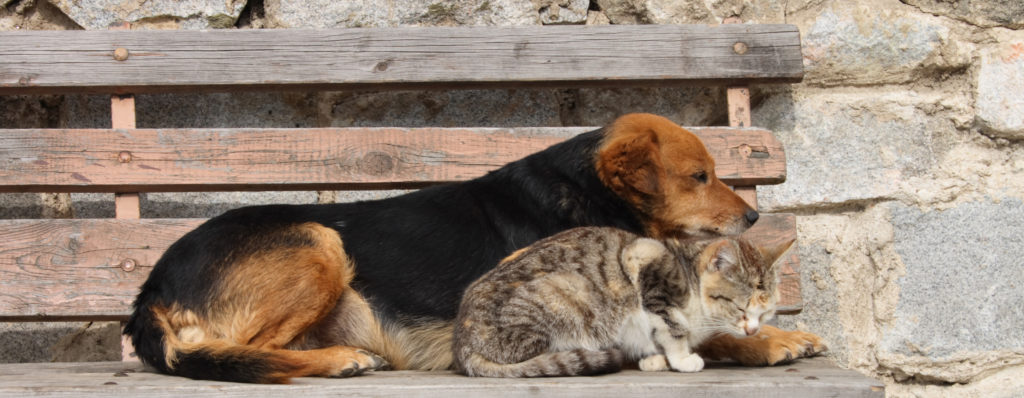
The Neighborhood Watch for Pets program is designed to help prevent pet neglect and just one person is needed to start one: YOU. Each month, check your route for threats to pets. It’s that simple, once you get started.
Here’s how:
Plan and prepare
- Draw a map of your neighborhood (or use one in your telephone book) and plan a route for you to follow. Remember to include alleys, too.
- Mark your calendar with the date every month that you plan to do your route.
- Keep notes to record your observations, if you observe an issue.
- What are threats to pets? IMPORTANT: learn how to identify real problems. It is important that you be educated about what is a problem and what is not. (For example, many elderly dogs are thin, despite eating a lot of food.) Good judgment is essential!
- Tell your local humane organization or animal shelter that you are the coordinator for your neighborhood. Give them your phone number and route. If the person you talk to doesn’t know about the the neighborhood watch for pets effort, supply this web site address: https://www.neighborhoodwatchforpets.org/. You can print out this page and show it, too.
- Inform your neighbors about your Neighborhood Watch for Pets plans. Print out door hangers from the Downloads menu. Fill the blanks with the important phone numbers in your community. Hang one on everyone’s front door.
- Print out a window sign from the Downloads menu and tape it to your front window, facing the street.
- Print pocket posters and loose pet door hangers from the Downloads menu, so you’ll be prepared.
Your monthly route
- Walk, bike, or slowly drive your route every month. WATCH and LISTEN for pets in distress. Bring your cell phone if you have one, and your notebook.
- Talk to people on your route when you get a chance, and tell them about the Neighborhood Watch for Pets.
- Learn the names and locations of all pets in your neighborhood, if you can. Describe each pet in a special section of your notebook, and record owner information.
- Pay special attention to people who are moving out of the neighborhood. Ask about their pet plans. Moving is a very risky time for pets. If your neighbor says, “My dog doesn’t want to move, so he ran away,” offer to look for him. He may be trapped in a shed or garage. This is a common occurence.
- If you suspect a problem, take action. Call the authorities you trust to uphold compassionate animal welfare standards—even if you are not sure about the severity of the problem. The professionals will know if a real problem exists. You don’t have to give your name, if you are concerned that the pet owner will get angry about the call.
Ongoing needs
Ask your friends and family members to start a Neighborhood Watch for Pets in their neighborhood. Tell them about your experiences, and how good you feel to be helping prevent pet neglect. Refer them to this web site, and offer to answer their questions any time.
If you have time, offer to be a neighborhood clearinghouse for pet care needs, when pet owners are on vacation or hospitalized. Recruit helpers.
How to Answer Questions from Neighbors
You’ll probably get some questions about your Neighborhood Watch for Pets. That’s good. It’s an opportunity to get people thinking about what they will do if they see a problem.
Here are some talking points:
- Say that it’s nice to get out regularly for walks and greet neighbors and their pets.
- Say that you are getting to know pets in the neighborhood, so that you can recognize dogs and cats that are stray or lost animals.
- Say that you like to help lost, sick, or injured pets because you are an animal-lover.
- Be positive and cheerful. Remember, questions can lead others to new thinking about how to respond to threat to pets themselves.
